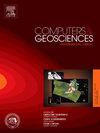Discriminator-based stratigraphic sequence semantic augmentation seismic facies analysis
IF 4.2
2区 地球科学
Q1 COMPUTER SCIENCE, INTERDISCIPLINARY APPLICATIONS
引用次数: 0
Abstract
With the rapid development of deep learning technologies, the seismic facies analysis technique using image classification and image segmentation models has made three-dimensional dense interpretation of seismic facies feasible. However, the application of deep learning models in seismic facies analysis is currently confronted with several challenges. These include difficulties in segmenting seismic facies in structurally complex areas, lower segmentation accuracy for rare categories within seismic facies, and the presence of significant “intra-facies noise” in the segmentation results. To address these issues, we propose a Discriminator-based Stratigraphic Sequence Semantic Augmentation Seismic Facies Analysis model (DSFA). Specifically, the model employs three primary strategies: firstly, the use of the Focal Loss function to enhance the model's learning capability for challenging segmentation samples and rare seismic facies categories; secondly, the utilization of the discriminator to output a Markov Random Field for learning stratigraphic sequence information; and lastly, the adoption of Skip connections between the model's Encoder and Decoder to integrate multi-scale seismic profile information. Experimental findings reveal that the DSFA model effectively addresses prevalent issues in seismic facies analysis, achieving optimal performance across comprehensive evaluation metrics. Additionally, the model is applicable to research in seismic geomorphology.
求助全文
约1分钟内获得全文
求助全文
来源期刊

Computers & Geosciences
地学-地球科学综合
CiteScore
9.30
自引率
6.80%
发文量
164
审稿时长
3.4 months
期刊介绍:
Computers & Geosciences publishes high impact, original research at the interface between Computer Sciences and Geosciences. Publications should apply modern computer science paradigms, whether computational or informatics-based, to address problems in the geosciences.
 求助内容:
求助内容: 应助结果提醒方式:
应助结果提醒方式:


